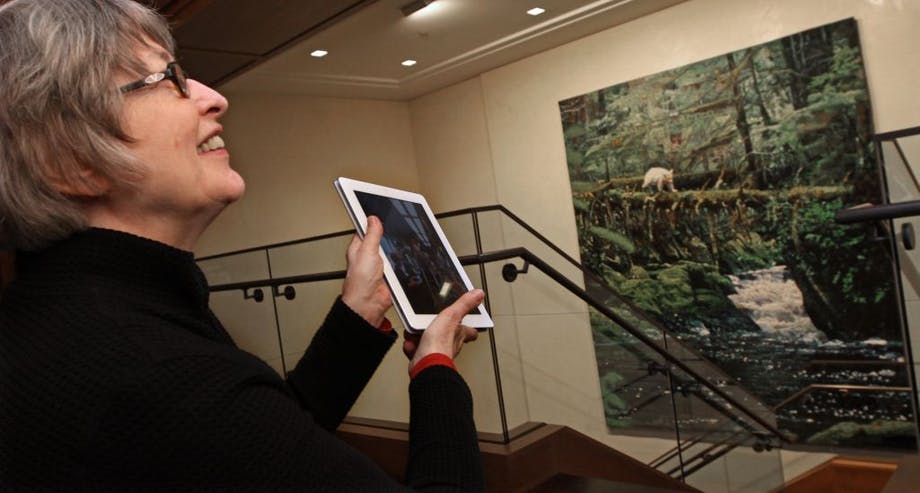
After one year, Eden Prairie’s Margaret A. Cargill Foundation is already one of the nation’s largest.
From its serene headquarters in Eden Prairie, the Margaret A. Cargill Foundation is casting its net wider and deeper than any philanthropy in Minnesota history.
Minneapolis StarTribune
January 15, 2012
Jean Hopfensperger
After one year, Eden Prairie’s Margaret A. Cargill Foundation is already one of the nation’s largest.
From its serene headquarters in Eden Prairie, the Margaret A. Cargill Foundation is casting its net wider and deeper than any philanthropy in Minnesota history.
Backed by a $3 billion fortune left by the Cargill Inc. heir, the foundation gave away $136 million in 2011, its first full year of operation. That’s roughly the same as the 100-year-old Rockefeller Foundation.
But Margaret Cargill’s foundation isn’t focused on grant-making history. It strives to channel the spirit of its founder in all ways. Drive up to its offices and see preferential parking for hybrid vehicles, a nod to Cargill’s environmental concerns. Walk into the CEO’s office, and pass through a stained-glass door flown in from Cargill’s California home.
And check out the $136 million grant portfolio, and see a foundation whose mission is to tackle some of the biggest problems in the world. Yes, the world — from preserving the globe’s largest coral reefs to its biggest tropical rain forests.
“The grants we give now are just the beginning,” said Christine Morse, CEO of the Margaret A. Cargill Foundation. “How we begin is incredibly important. We’re taking great pains to do things as thoughtfully as we can.”
Its trajectory offers rare insights into how historic charitable legacies, not unlike the Carnegie and Rockefeller foundations, are born.
Monster philanthropy
The sheer volume of dollars behind the enterprise is staggering. Cargill, a low-profile California philanthropist who died in 2006, left a fortune that has mushroomed into at least $6 billion over the past year, thanks to a complex transaction that allowed Cargill’s trustees to swap her shares of Cargill stock for publicly traded shares of Mosaic Co.
About $3 billion now supports the Margaret A. Cargill Foundation. Another $3 billion funds the two philanthropies with a more narrow focus that Cargill had started earlier.
Only six other national philanthropies have more than $6 billion in assets, and only 13 foundations have more than $4 billion, according to the Foundation Center, a New York-based authority on foundations.
“Sizewise, it is comparable to those large foundations that we historically have known,” said Bill King, president of the Minnesota Council on Foundations, referring to the legacies of the Carnegies and Rockefellers. “Very few foundations start this large.”
Likewise, few foundations have taken such care to fuse their founder’s vision and personality into its culture, he said.
For example, since environmental protection was critical to Cargill, foundation headquarters are landscaped with native plants, heated with rooftop solar panels and fitted with hardwood floors from wood reclaimed from Lake Superior.
Likewise, environmental projects won some of its first grants. Last year it funded World Wildlife Fund efforts to protect sea life off the coast of British Columbia, for example, a feasibility study for a network of nature preschools, and the Micronesia Conservation Trust, an umbrella group of several island nations dedicated to preserving some of the world’s largest coral reefs.
The photographs on the office walls cast light on where other dollars are headed.
There’s Margaret Cargill in an American Red Cross uniform, reflecting her concern for disaster relief. A dozen grants for disaster projects were funded last year, from support to flood victims in Pakistan to a camp for children affected by tornadoes in north Minneapolis.
There’s Cargill’s dog, Kari, at her back-yard swimming pool, pointing to a third priority area: animal welfare. The foundation funded a project to help animals affected by the Wadena tornado last year, and additional animal welfare funding will get off the ground this year, said Sallie Gaines, foundation spokesperson.
Meanwhile, a photo of Cargill at her 80th birthday party reflects her worries for senior citizens who aren’t blessed with family fortunes. The foundation will launch its grant-making for senior services this year, in particular for seniors in rural areas, said Gaines. It just hired a program director, she said.
Minnesota is likely to benefit most from grants related to disaster relief, the arts and aging. The arts program is slated to get off the ground this year, focusing on native arts. Funding for native arts in the Pacific Northwest is first priority, said Gaines, and the Upper Midwest is next.
Environment. Relief and recovery. Aging services. Animal welfare. Arts and culture. Children and families. Health. These are the issues that will guide the foundation through the century ahead, but in the same low-profile way that Cargill operated when she was alive.
“We’d prefer to go where there’s not a lot of attention,” said Terry Meersman, vice president of programs, who also helped launch the Bill and Melinda Gates Foundation.
Read the full article at the Minneapolis StarTribune.

